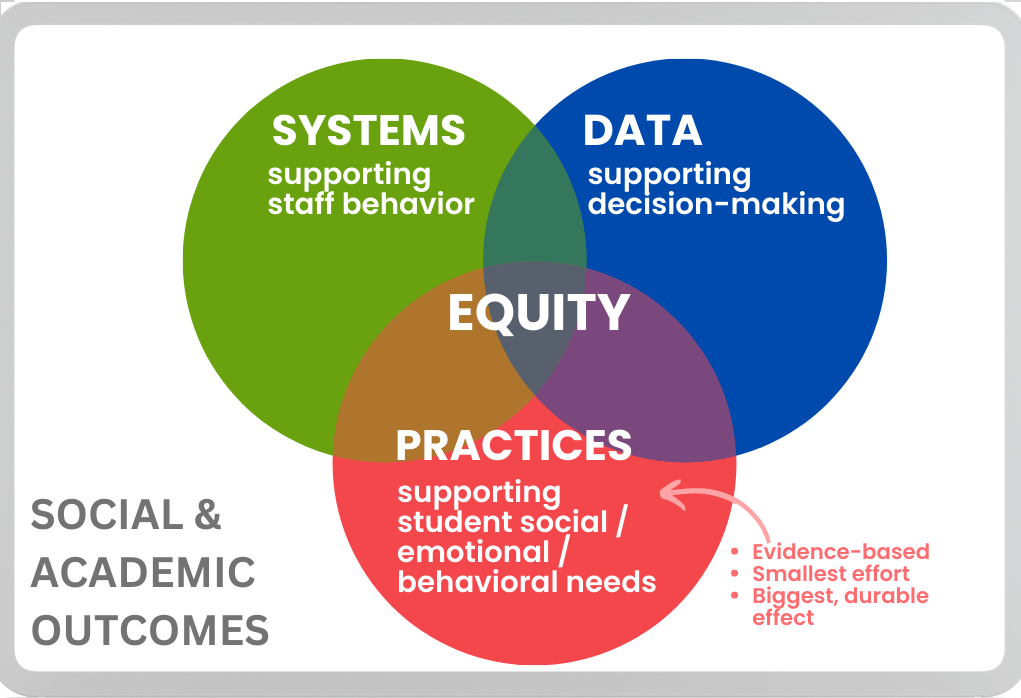While research has demonstrated that schools implementing PBIS with fidelity have lower racial discipline disparities, these disparities are not always eradicated. We need to explicitly focus on centering equity so that all means all — all students, all settings, all the time (Aguilar, January, 2021). To do this, we need to understand what educational equity is, what it looks like in action, and how we can enhance the PBIS framework to ensure equity.
What is Educational Equity?
- Educational equity exists when educational policies, practices, interaction, and resources are representative of, constructed by, and responsive to all people so that each individual has access to, meaningfully participates in, and has positive outcomes from high-quality learning experiences, regardless of individual characteristics and group memberships (Fraser, 2008; Great Lakes Equity Center, 2012).
What does equity look like?
- Access: All students have entrance into, involvement with, and full benefit of quality learning opportunities (Paris, 2012).
- Representation: Having presence in decision-making and content (Mulligan and Kozleski, 2009).
- Meaningful Participation : All students have agency and are empowered to contribute in effectual ways (Fraser, 1998).
- High Outcomes: Solutions benefit all students towards self-determination and the ability to act as contributing citizens in a democratic society and global community (Waitoller & Kozleski, 2013).
How can schools enhance equity?
- Collect, use, and report disaggregated discipline data
- Implement a behavior framework that is preventive, multi-tiered, and culturally responsive
- Use engaging instruction to reduce the opportunity (achievement) gap
- Develop policies with accountability for disciplinary equity
- Teach strategies for neutralizing implicit bias in discipline decisions
More information and resources about equity work within PBIS implementation can be found here.
The PBIS Framework

Systems are in place to support staff behavior.
Data is collected and analyzed to support decision-making.
Practices that are evidence-based, take the smallest effort, and have the biggest, most durable effect are implemented to support student behavior.
